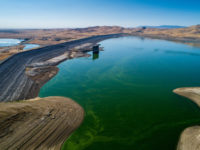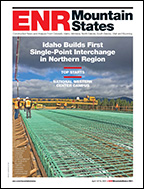The Guy West Bridge at California State University-Sacramento will close for five weeks beginning July 18, as the U.S. Army Corps of Engineers Sacramento District begins construction on a $3.2 million levee improvement project on the American River.

�We�re going back and fixing gaps in the levee system that were not addressed in earlier construction,� says John Hoge, Corps project manager.
Hoge says when the bridge opened in 1967, the Corps had a contract to construct approximately 20 miles of cutoff wall along the north and south banks of the American River, but the contract did not include dealing with stretches of levee where there were obstructions such as pipes going through the levees.
He says the obstructions were bypassed, leaving two separate 450 ft. �gaps or windows� in the levees which remain to this day. �During flood events, there is a potential for [water] seepage through or under the levee,� says Hoge. �[A levee] is like a chain; it is only as strong as its weakest link.�
To fix the situation, cutoff walls, 3 ft. wide and 70 ft. deep, will be installed to bridge the gaps between the existing cutoff walls.
Construction highlights include the removal of six welded steel stormwater pipes so that the cutoff wall can be installed below the pipes. The pipe sections will then be replaced and the surface of the levee completed.
Authorized by the Water Resources Development Act (WRDA) of 1996, the levees at the Guy West Bridge are among the last remaining sites to be upgraded under the Corps� and Sacramento Area Flood Control Agency�s American River Common Features Project.
Between 2000 and 2002, more than 20 miles of cutoff walls, designed to stop seepage, were built into American River levees.
The bridge connects the Campus Commons student housing area across the American River to the university.
Construction will continue seven days until its August 24 completion in order to avoid disrupting the annual Eppie�s Great Race triathlon and the start of CSUS�s fall semester.
The project is funded by federal stimulus and the state of California.




